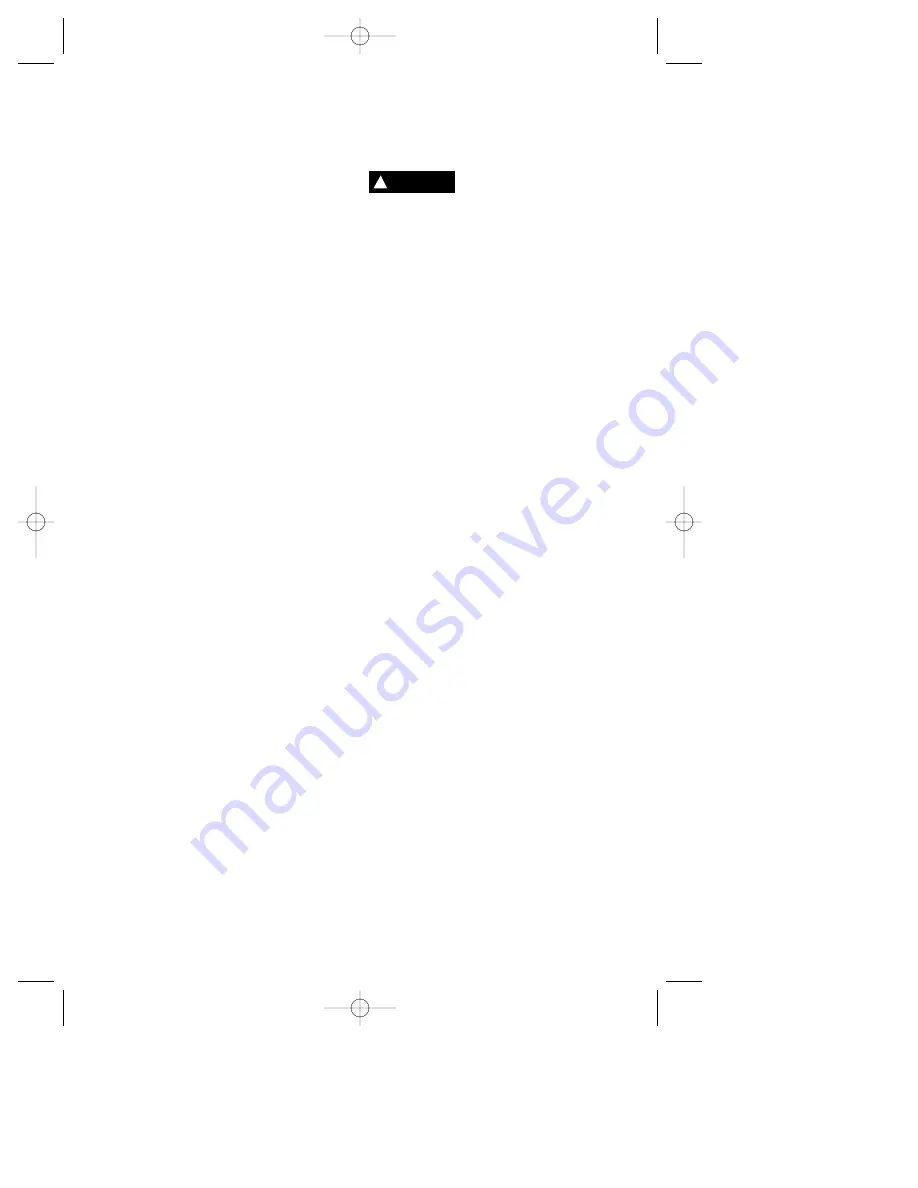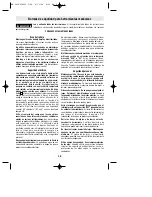
Do not use dull or damaged bits and
accessories.
Dull or damaged bits have a
greater tendency to bind in the workpiece.
Always use both handles for maximum
control over this hammer. Never attempt to
operate this tool with one hand.
This tool
develops intense percussive forces during
operation and you may lose control if
attempting one hand operation.
Position yourself to avoid being caught
between the tool or side handle and walls
or posts.
Should the bit become bound or
jammed in the work, the reaction of the tool
could crush your hand or leg.
Do not strike the bit with a handheld
hammer or sledge hammer when
attempting to dislodge a bound or jammed
bit.
Fragments of metal from the bit could
dislodge and strike you or bystanders.
Never place the tool down until the motor
has come to a complete stop.
When removing the bit from the tool avoid
contact with skin and use proper protective
gloves when grasping the bit or accessory.
Accessories may be hot after prolonged use.
Some dust created by
power sanding, sawing,
grinding, drilling, and other construction
activities contains chemicals known to
cause cancer, birth defects or other
reproductive harm. Some examples of
these chemicals are:
• Lead from lead-based paints,
• Crystalline silica from bricks and cement
and other masonry products, and
• Arsenic and chromium from chemically-
treated lumber.
Your risk from these exposures varies,
depending on how often you do this type of
work. To reduce your exposure to these
chemicals: work in a well ventilated area,
and work with approved safety equipment,
such as those dust masks that are specially
designed to filter out microscopic particles.
-4-
!
WARNING
BM 1619929652 2-04 2/13/04 8:19 AM Page 4





































